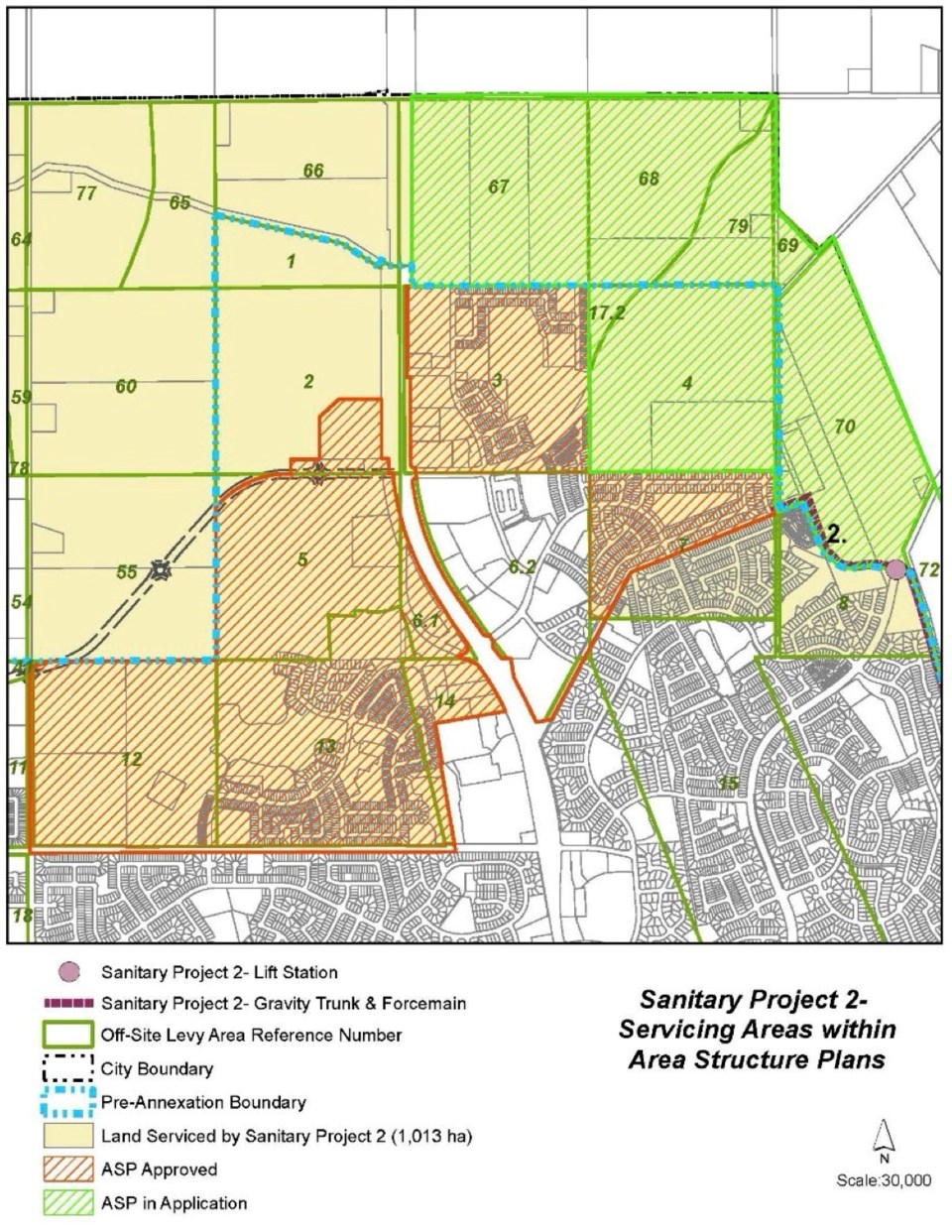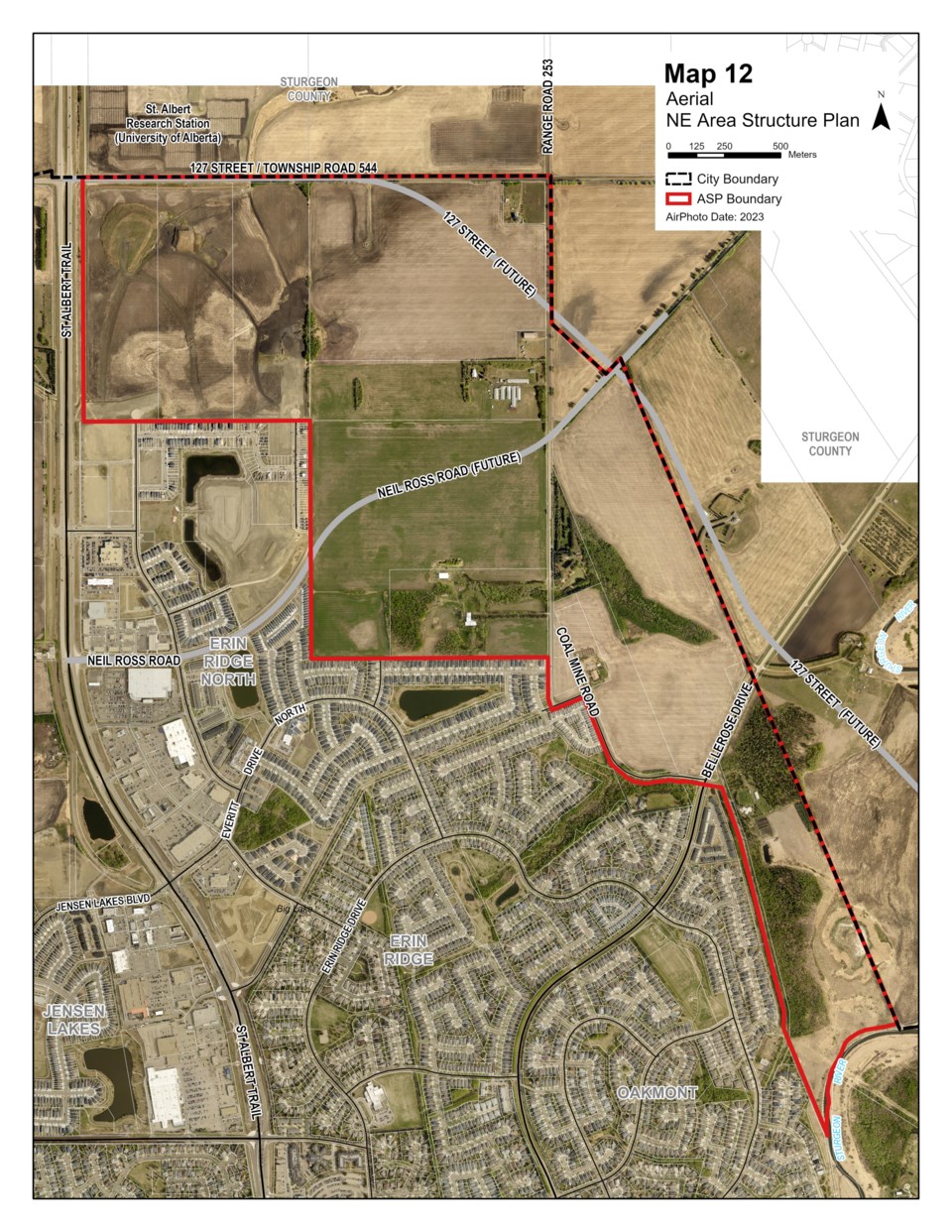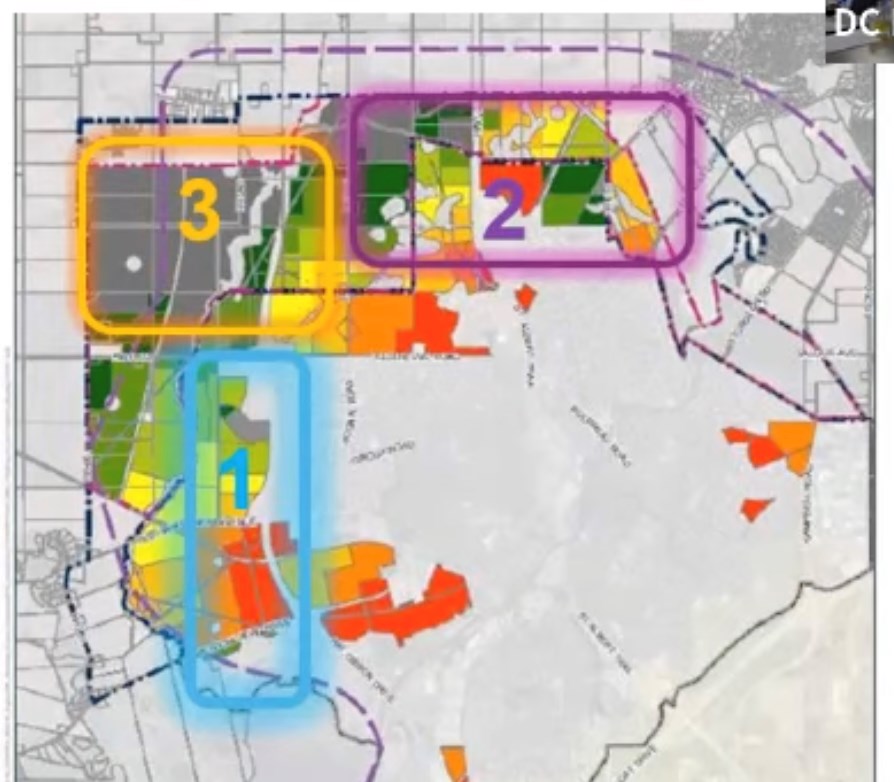Utilities could be flowing through the city’s largely undeveloped northeast in 2027, but should they?
The city’s standing committee of the whole received an update to the servicing of that sector of St. Albert at their regular meeting Tuesday, Oct. 8 ahead of a decision scheduled for Nov. 5.
According to city staff, funding the development of the northeast now:
- Would put pressure on future projects competing for space under the borrowing limit
- Could force other capital projects to be put off or cancelled
- Would also grow the operating budget
- Could create risk if other areas are being invested in at the same time
The northeast servicing (NES) project’s $70 million pricetag includes 15 per cent contingencies for both of its major components, a new lift station and sanitary/stormwater trunk line, which would be tendered separately given their “very different scopes.” Design of the lift station is at 90 per cent and of the pipeline 60 per cent.
The vast majority of the project's cost is referred to as OSL, or off-site levy, meaning the city could recover it through the taxes developed properties would eventually generate years or even decades in the future.
The city’s administration put a hold on new development in the northeast in 2022 with some exceptions when sewer capacity was maxed out. Provided councillors approve the project and the associated borrowing bylaw, construction on a new pipeline and lift station could begin in Q2 of 2025 and finish by Q2 of 2027.
But it wouldn’t end there. City staffers including Dawny George, director of engineering services, warned that servicing the northeast would spur private development, which could “trigger” the need to complete other major infrastructure projects. These could be worth $232 million over the 16 years following the completion of the pipeline and lift station.
Such projects include the construction of the $19-million Fire Hall #4, a $23-million stretch of Neil Ross Road between St. Albert Trail and Coal Mine Road and a length of Fowler Way from Hogan Road to St. Albert Trail estimated to cost $28 million, and that’s just for starters.
The city’s municipal development plan (MDP), Flourish, was approved in April 2021. It envisions 100,000 people residing in the city within the next 20 years or so, with growth focused on densification along St. Albert Trail, and in the city's blossoming west end. Earlier this year, councillors approved a new West area structure plan (ASP), which will regulate development in that part of the city, including the future industrial Lakeview Business District.
Blue, purple, orange
City staff urged councillors to consider the risk of pouring scarce city resources into two parts of the city at once. A slide in their presentation made it elementary, with the city’s west highlighted in blue, the northeast in purple and the northwest in orange.
The plan should be to “start off in the blue, then go the purple, then to the orange,” according to Kristina Peter, the city’s director of planning and development.
But Flourish didn’t fully account for St. Albert bringing on most of the lands contained in the northeast Area Structure Plan (ASP).

“Council must carefully consider its strategic priorities, their financial implications and infrastructure requirements as it evaluates investment in the northeast servicing project,” Peter said.
Proceeding with the servicing of the northeast and the west including the Lakeview district would push the city beyond both of its debt limits, that set by the Municipal Government Act and its own, lower, internal limit, from 2029 to 2033 (the lower limit would be exceeded until 2035).
That means serving the northeast and Lakeview would require councillors to make tough decisions on what other projects in the 2024 capital plan to delay.
“For example, even one of the projects that Dawny was referring to that would be triggered by northeast servicing would use most if not all of the available capacity remaining under the debt limits,” Anne Victoor, director, financial and strategic services, said.
George also pointed out that no grants from senior levels of government have been found that could offset the $70 million NES infrastructure project.
Coun. Ken MacKay was fixated on the timeline of when the city shifted focus to the west.
“This shouldn’t have come as a surprise to us,” he said. “We knew (the northeast) was a growth area, and that it needs servicing.”
Victoor said the west bubbled to the top of the priority list based on a few inputs, including feedback from previous councils, members of the public and the development community specifically, and the decision to focus on building out the non-residential tax base with green-filling to the west.
Last but not least, the annexation of lands to the northeast hadn’t occurred when Flourish was published, so when much of this planning was taking place, installing the NES project would actually have been benefitting land outside the city limits.
“Growing the north was maybe deprioritized from a city investment perspective in the MDP, but if a developer wanted to come in and make that investment, we wouldn’t stop them,” Victoor said.
“If we didn’t require this utility infrastructure to service the northeast, there would not be a conflict,” Mayor Cathy Heron offered. “It’s the investment part.”
Brave new world
Coun. West Brodhead said the world has changed dramatically since 2016-17. The province is growing, the land to the northeast is now St. Albert’s, and the city should be “bold” at a time when the province is growing at a record pace.
“We only borrow money when we need to … and stage it so we can manage it,” he said. “That’s why we get the big bucks to do this.
“We have to do the west for sure, but I don’t know how you kill this.”
Coun. Sheena Hughes expressed concern over putting everything on the “city’s credit card.
“I’m not sure if our current off-site levy plan, of having the city have to build it and also have to pay for it or find the payments for it at the time of, is actually going to be a long-term feasible solution. I don’t know what we’re going to do with the next one.”
Victoor said other cities have been mulling what portion of major projects to “front-end” this way, and that staff would be before council to discuss the city’s debt strategy at a future meeting.

City CAO Bill Fletcher said staff intended only to inform council’s decision.
“What you’re getting from us is the world the way it is right now,” he said. “Council can decide whatever you want, we will enable it. We just want it to be an informed decision based on all the facts.”
If all goes as planned, second and third reading of the NES borrowing bylaw would appear before council in the first week of January. Meanwhile citywide, the growth continues. According to data from St. Albert Development Branch, from Aug. 29 to Oct. 2, 2024,123 of 124 development permit applications received were approved. The work ranged from new hot tubs and basement units to entire single detached family dwellings and townhouses.
The committee received the NES report as information. The file is expected to appear before council for a decision Nov. 5.
A public hearing on the draft northeast ASP is scheduled for 2 p.m. during the same meeting.




